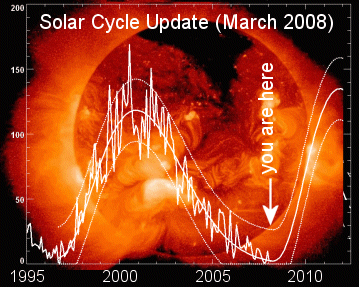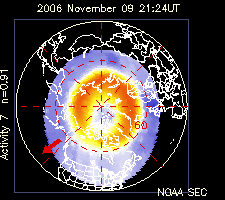SOLAR CYCLE UPDATE
2008 has been a year of few sunspots and mostly blank suns. A solar cycle update just released by NASA solar physicist David Hathaway shows why. We are experiencing the lowest ebb of solar minimum:
In the plot, the noisy curve is the International Sunspot Number measured by a worldwide network of solar observers. The smoothed curves are predictions for the future. We see that sunspot numbers may remain low for many months to come before beginning a rapid ascent in early 2009 toward the next solar maximum. It's something to look forward to. Meanwhile, stay tuned for quiet.



